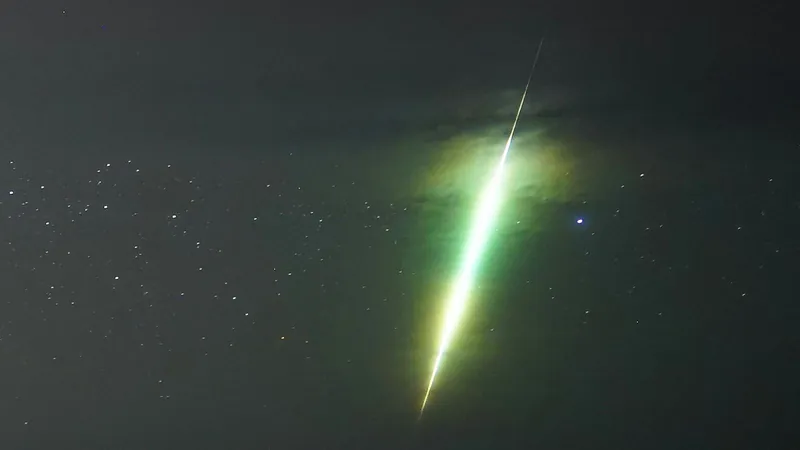
Astronomical Alert: Tonight's Draconid Meteor Shower Will Dazzle Stargazers!
2024-10-08
Author: Liam
Tonight's Draconid Meteor Shower
Tonight marks the peak of the Draconid meteor shower, offering stargazers the perfect opportunity to witness a breathtaking display of shooting stars—provided the skies remain clear! If the weather does not cooperate, fear not; this celestial spectacle will still be visible on the following two evenings.
Unique Viewing Conditions
The Draconid meteor shower is particularly special as it is best viewed in the early evening—quite different from most meteor showers that peak later in the night. Its meteors radiate from the constellation Draco, which is prominently positioned in the sky around dusk. Therefore, don't miss your chance between 7 PM and 7:30 PM to catch the action!
Origins of the Draconids
Meteor showers like the Draconids occur due to the debris left behind by comets as they travel through space. This particular shower originates from comet 21 P/Giacobini-Zinner, discovered by French astronomer Michel Giacobini in 1900.
Variability of Intensity
The intensity of the Draconid shower can vary dramatically from year to year. Some years yield just a few meteors, while others may experience remarkable 'meteor storms.' One such storm occurred in 1933 when observers in Europe reported an astonishing 500 Draconid meteors per minute!
Future Meteor Showers
While tonight's display isn't expected to rival that historic event, astronomers recommend keeping your eyes on the sky. Besides the Draconids, the astronomical calendar is packed with more meteor shows in the coming months. Notably, the Orionids will peak overnight on October 21-22, associated with the famous Halley's Comet.
Mark Your Calendars
As we approach December, mark your calendars for multiple meteor showers. The Taurids will peak on November 12-13 and are noted for their slow-moving meteors, while the Leonids shower will light up the sky on November 18. The Geminids, another highlight of the meteor calendar, are expected to peak on December 14-15, known for their bright meteors that often lack lingering trails.
Conclusion
As you celebrate the holiday season, keep your gaze upward; there's much to behold in the celestial tapestry above! Don't miss out on these captivating cosmic events that grace our skies—your next celestial wonder awaits!









 Brasil (PT)
Brasil (PT)
 Canada (EN)
Canada (EN)
 Chile (ES)
Chile (ES)
 España (ES)
España (ES)
 France (FR)
France (FR)
 Hong Kong (EN)
Hong Kong (EN)
 Italia (IT)
Italia (IT)
 日本 (JA)
日本 (JA)
 Magyarország (HU)
Magyarország (HU)
 Norge (NO)
Norge (NO)
 Polska (PL)
Polska (PL)
 Schweiz (DE)
Schweiz (DE)
 Singapore (EN)
Singapore (EN)
 Sverige (SV)
Sverige (SV)
 Suomi (FI)
Suomi (FI)
 Türkiye (TR)
Türkiye (TR)